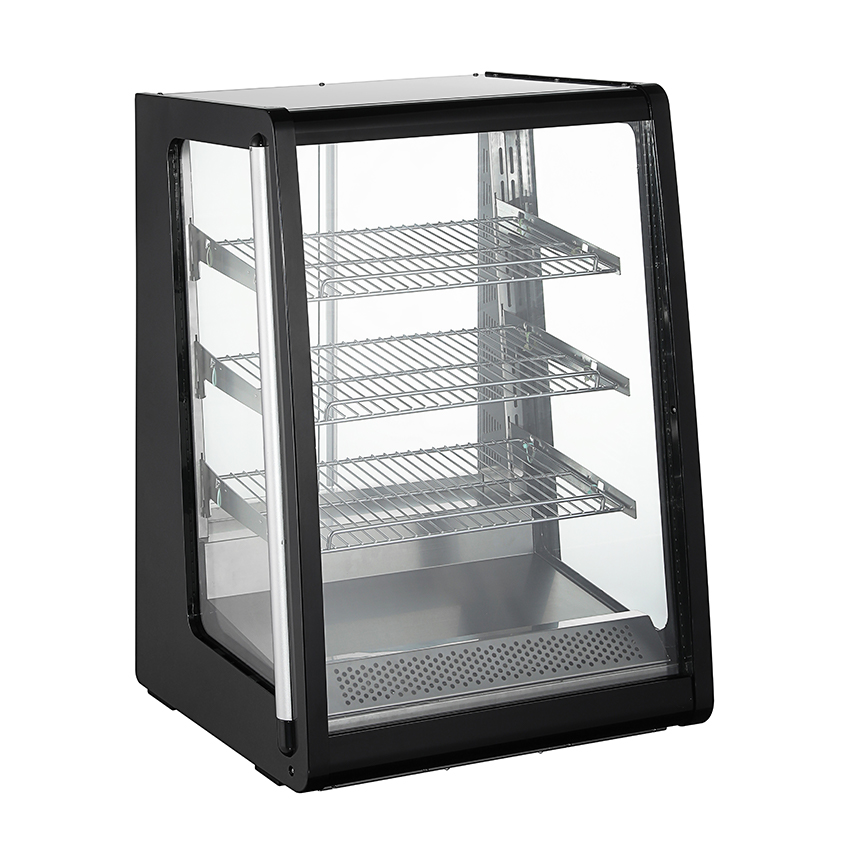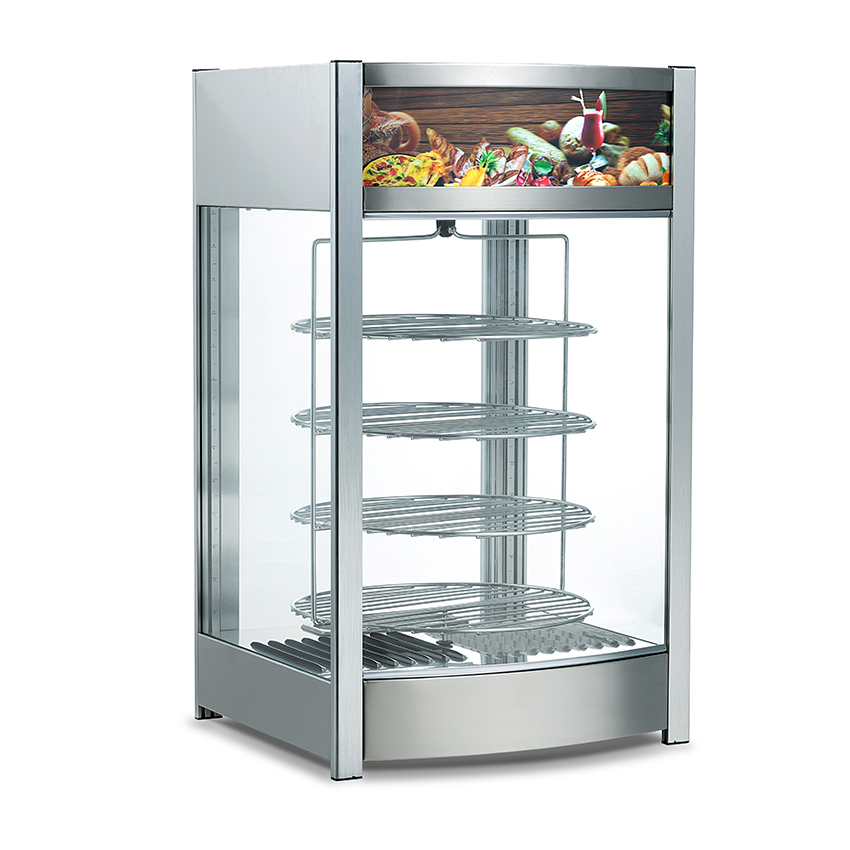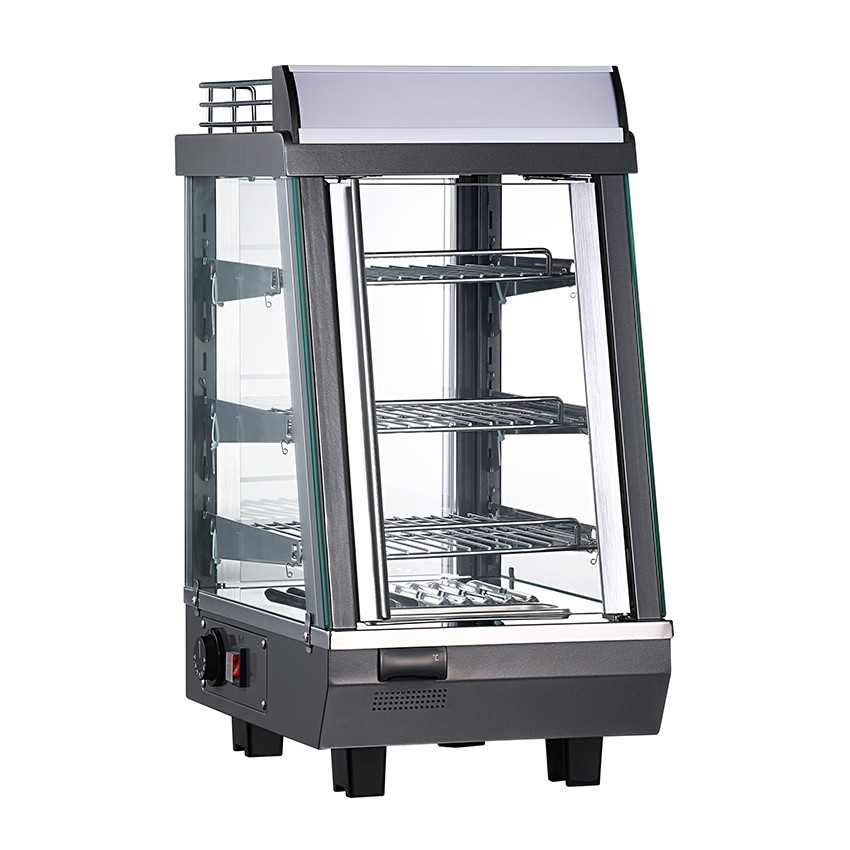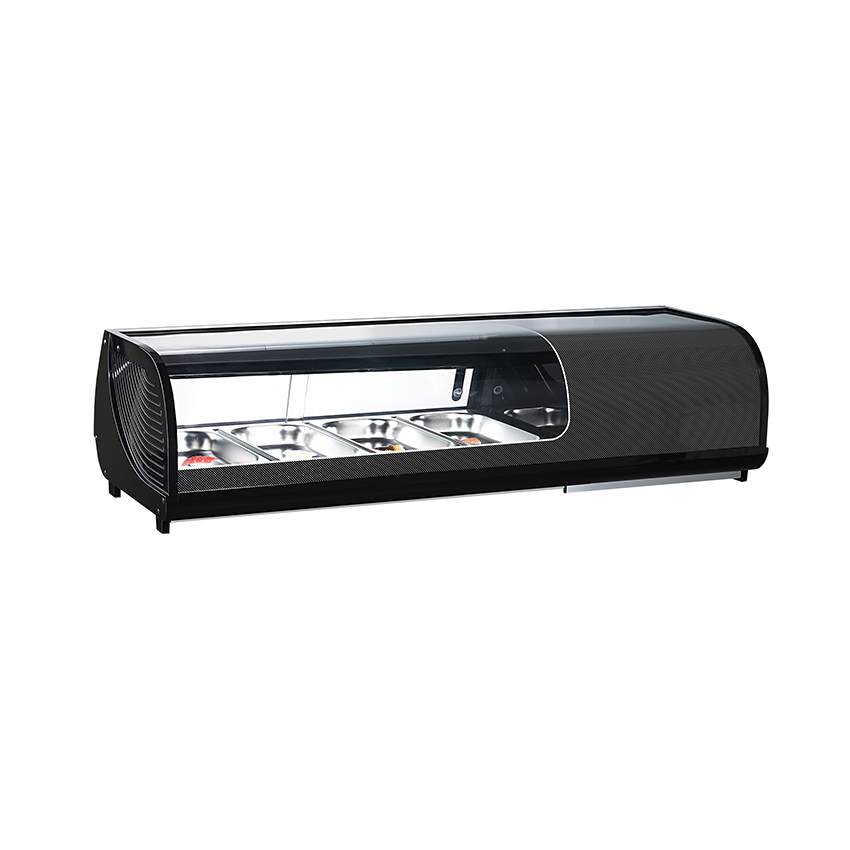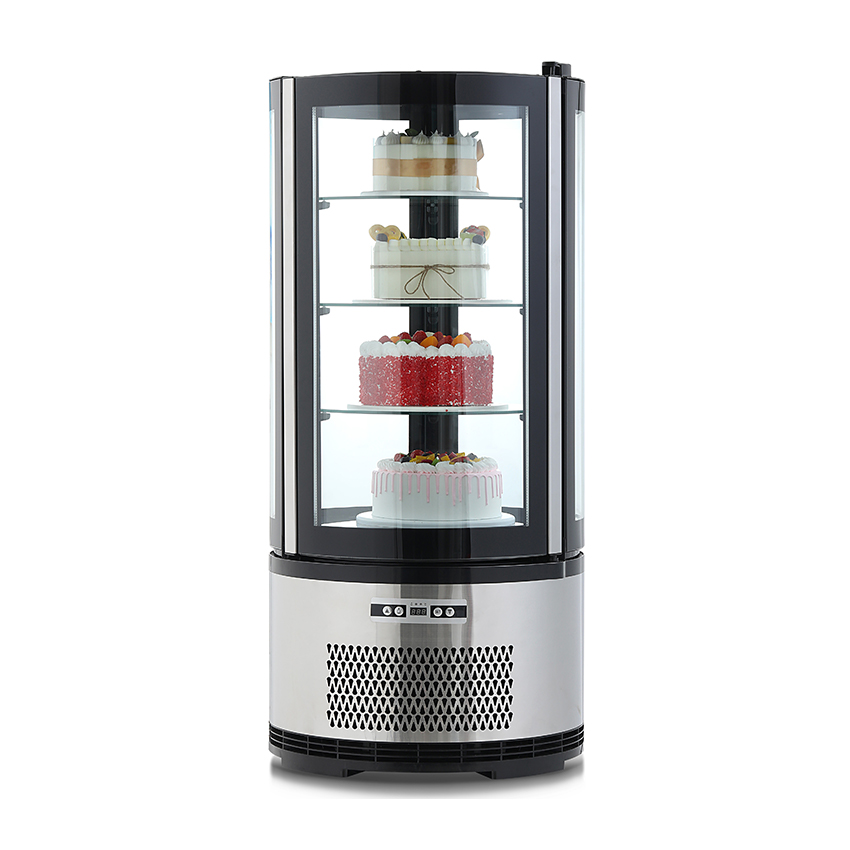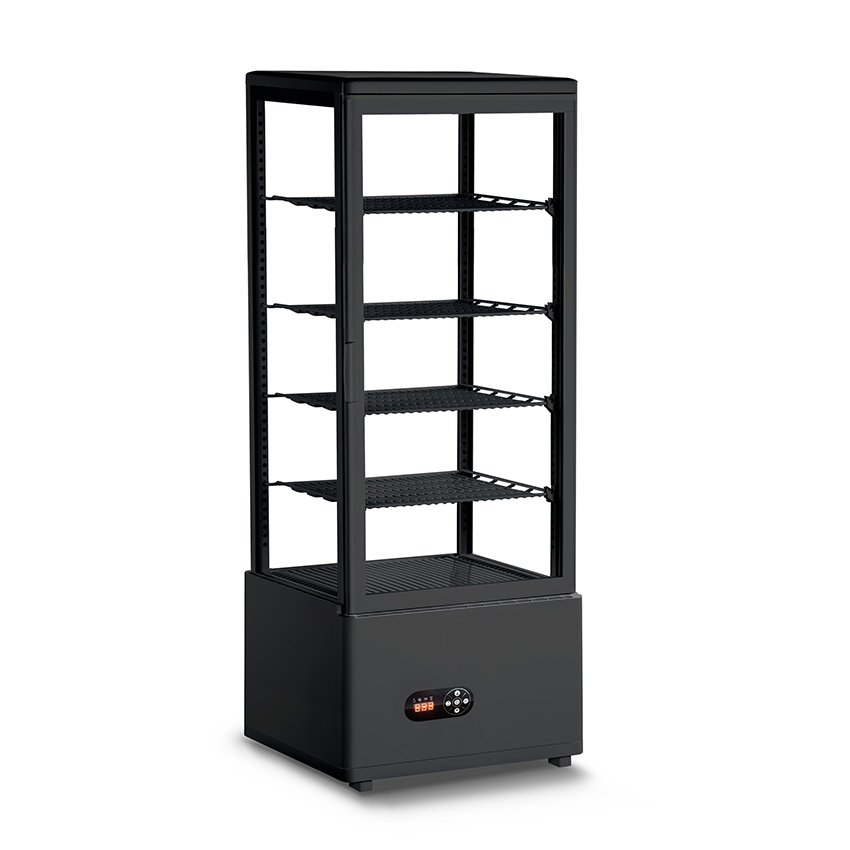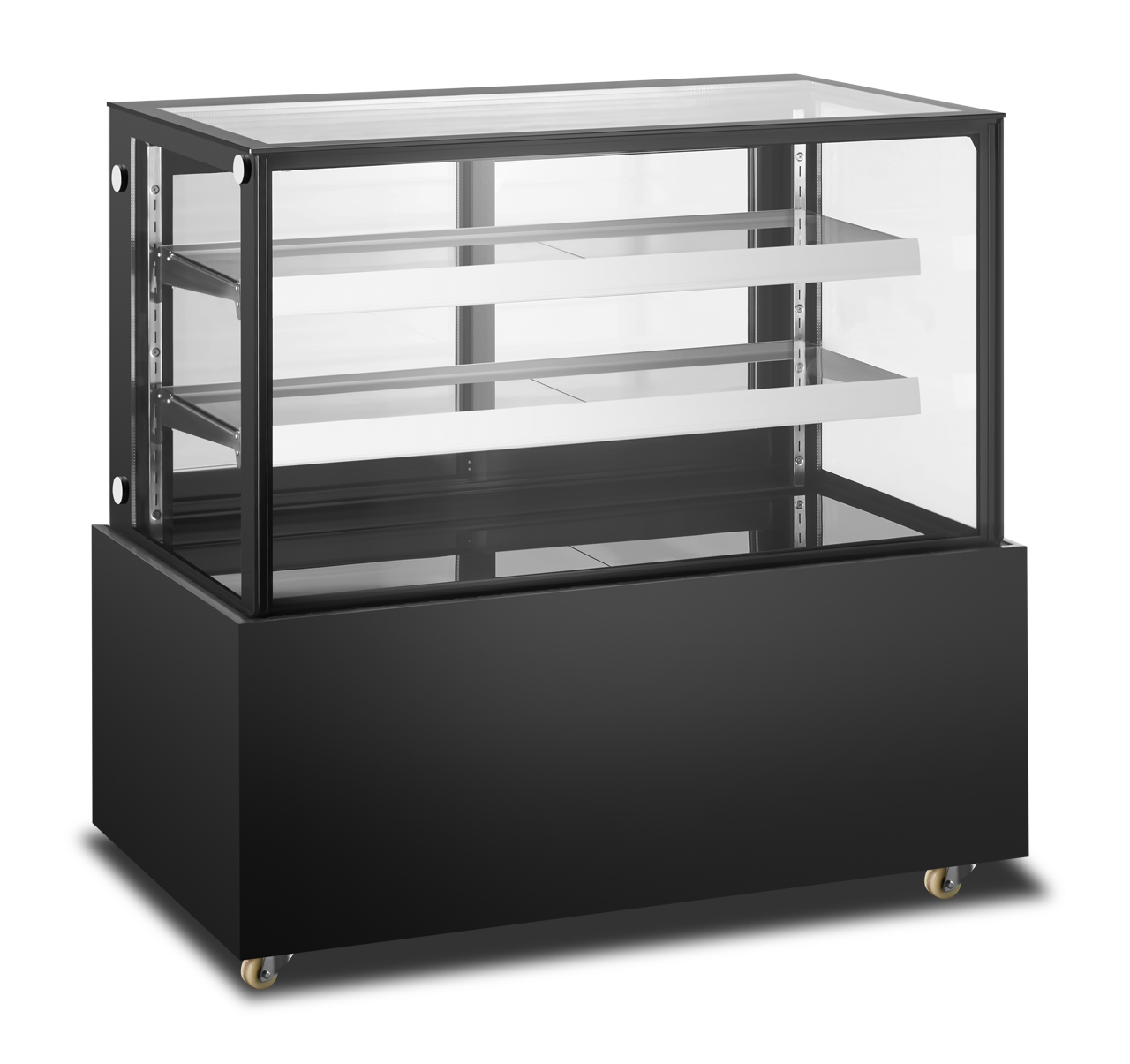Content
1. How do tabletop hot cabinets improve serving speed?
In the fast food industry, serving speed directly impacts customer satisfaction and table turnover. How can you efficiently maintain food temperature and reduce wait times? Tabletop hot cabinets, with their multifunctional design and intelligent temperature control, are a "efficiency accelerator" for fast food restaurants.
Simultaneously keeping multiple items warm, reducing meal preparation time
Traditional hot cabinets often have limited functions. Tabletop hot cabinets can simultaneously store a variety of items, such as burgers, fried chicken, French fries, and pizza, eliminating the need for frequent equipment changes. Different temperature zones (e.g., high temperature for main dishes, low temperature for preserving the texture of side dishes) provide greater serving flexibility.
Fast heating, ready for immediate use
Commercial tabletop hot cabinets utilize high-efficiency heating elements that reach the set temperature (e.g., 60°C to 90°C) in 3-5 minutes, 50% faster than traditional hot tables. This allows staff to restock hot food without waiting, shortening customer pickup times.
Compact Design, Optimizing Kitchen Flow
Compared to large holding cabinets, tabletop hot cabinets take up less space and can be placed in food preparation areas, checkout counters, or takeout packaging areas. Employees can simply turn around and pick up food, reducing travel time. They are particularly suitable for small fast food restaurants with a "front-of-store, back-of-kitchen" layout.
Intelligent Temperature Control, Preventing Food Waste
This precise temperature control system ensures food maintains its optimal texture for extended periods, preventing moisture loss or drying out from repeated heating. For example:
Fried chicken: 70°C for crispy exterior and tender interior
Congee and soup: 85°C to prevent congealing and cooling
Suitable for takeout, improving packaging efficiency
Many tabletop hot cabinets feature a double-layer or open design, allowing employees to pick up food with one hand while simultaneously packing it with the other. This facilitates streamlined operations during peak takeout seasons, potentially increasing daily orders by 20%.

2. Tabletop Hot Cabinet: Easily Solve Food Insulation Challenges
Limited Space? Compact Design Fits Easily
Traditional hot cabinets are bulky, while tabletop hot cabinets are typically only 40-60cm wide, allowing for flexible placement at the bar, food preparation area, or takeout window. They are particularly suitable for smaller dining locations like fast food restaurants, tea shops, and convenience stores.
Food Gets Cold Easily? Constant Temperature Technology Preserves Flavor
PID Precision Temperature Control (±1°C Accuracy) Prevents High Temperatures from Drying Out Food and Low Temperatures from Harvesting Bacteria.
Applicable Products:
60-75°C: Hamburgers, Pizza, Fried Chicken (Maintains Crispiness)
80-90°C: Porridge, Soups, Oden (Prevents Congealing)
Four Core Advantages of Tabletop Hot Cabinets
|
Advantages |
Traditional heat preservation method |
Tabletop hot cabinet |
|
Space requirement |
Requires a separate worktop |
Can be placed on any countertop |
|
Insulation effect |
Prone to uneven heating and cooling |
Constant temperature without blind spots |
|
Applicable scenarios |
Back-of-house use only |
Applicable for front-of-house/takeout |
|
Cleaning difficulty |
Difficult to disassemble, many blind spots |
Removable tray, wipes clean |
Recommended Application Scenarios
- Fast Food Restaurants: Keep burgers, fries, and chicken nuggets warm 24/7 to avoid customer complaints of "lukewarm food."
- Milk Tea Shops: Grilled sausages and egg waffles are made and sold fresh to increase average order value.
- Convenience Stores: Keep oden and steamed buns warm 24/7 to attract night shift workers.
- Bakeries: Keep bread and egg tarts soft and crispy, extending their best before date.
3. Common Problems and Solutions for Using Table Hot Cabinets
Temperature-Related Issues
- The temperature does not reach the set value
Possible Causes:
Insufficient power (home model used in commercial settings)
Damaged heating element or faulty thermostat
Poor door seal causing heat loss
Solution:
Check the unit's power (commercial use recommended: ≥1500W)
Contact after-sales service for heating element repair or thermostat replacement
Clean the door seal or adjust the door hinges
- Large temperature fluctuations, with food running hot or cold
Possible Causes:
Poor thermostat accuracy (mechanical temperature control with large error)
Frequent door opening causing heat loss
Solution:
Select an electronic PID temperature control model (±1°C error)
Reduce door opening frequency or install a transparent window for easier viewing
Equipment Operation Issues
- The hot cabinet does not heat and the indicator light is off
Possible Causes:
Power not connected or outlet faulty
Fuse blown/circuit board damaged
Solution:
Check the power cord for looseness
Replace the fuse with a fuse of the same specification or contact after-sales service
- Slow heating speed
Possible causes:
Unstable voltage (less than 220V)
Internal dirt affecting heating efficiency
Solution:
Install a voltage stabilizer (especially in older commercial areas)
Regularly clean the heating element (once a month)
Cleaning and Maintenance Issues
- Water accumulation or food residue in the inner tank is difficult to clean
Possible causes:
Failure to clean promptly causes solidified dirt
Clogged drain holes
Solution:
Wipe daily with a neutral detergent; for stubborn stains, use a soft cloth and baking soda solution
Use a thin wire to clear the drain holes (some models require tray removal)
- Fogging or condensation on the glass door
Possible causes:
Large temperature difference between inside and outside (common in winter)
Deteriorated door seals
Solution:
Temperarily lower the temperature or open the door to release moisture
Replace the seals (cost approximately 20-50 yuan)
Safety and Energy Issues
- The device casing is hot. Is this normal? Note:
Slight warmth is normal (especially for metal-cased models).
However, if it's too hot to touch (>60°C), it may indicate poor heat dissipation or a circuit malfunction.
Solution:
Ensure at least 10cm of free space around the unit to dissipate heat.
Avoid continuous operation for more than 12 hours.
- Sudden Increase in Power Consumption
Possible Causes:
Decreased efficiency of the heating element (requiring higher power to maintain temperature)
Lack of door seal causing continuous heating
Solution:
Test actual power consumption (using a power monitor)
Replace aging components or upgrade to a more energy-efficient model.
Other Practical Suggestions
When not in use for extended periods:
Empty the inner container, unplug the power cord, and store in a dry environment to prevent rusting of metal components.
Treating Abnormal Noises:
Buzzing fan → Check for oil or dirt (lubrication required)
Clinking metal → Tighten internal screws or adjust the tray position.
Tips for Extending Lifespan:
Check the power cord and temperature control probe monthly.
Avoid scratching the inner container with hard objects such as steel wool.
4. Tabletop Hot Cabinet Maintenance Guide - Extending Lifespan and Efficient Operation
Daily Cleaning and Maintenance
Daily Cleaning (After Business Hours)
Power Off: Ensure the appliance is turned off and unplugged.
Empty the Inner Chamber: Remove all food and trays to prevent spoilage.
Wipe the Interior: Use a neutral detergent and a soft cloth to wipe the inner chamber, heating element, and tray.
Stubborn grease: Soak in baking soda and warm water and then scrub to avoid scratches with steel wool.
Cleaning the Door Seals: Use a damp cloth to clean the door seals to prevent grease buildup and seal failure.
Check the Drain Holes: Ensure drainage is unobstructed to prevent accumulated water from breeding bacteria.
Note:
Do not rinse directly with water to prevent short circuits.
Avoid using strong acids or alkalines to prevent corrosion of the stainless steel inner chamber.
Weekly Deep Maintenance
Inspect the Heating Elements and Temperature Control System
Observe the Heating Elements:
Check for deformation, blackening, or carbon deposits (replace if necessary).
Wipe the surface with a dry cloth to remove any grease and ensure proper heat dissipation. Test Temperature Control Accuracy:
Use a thermometer to measure the actual temperature inside the cabinet and compare it to the setpoint (the error should be ≤ ±3°C).
If the deviation is large, calibrate or replace the thermostat.
Check Door Seals and Hinges
Door Seal Test:
Place an A4 sheet of paper between the door and pull. You should feel noticeable resistance when pulling (a good seal).
If the seal is loose, heat it with a hair dryer to restore its elasticity, or replace it directly.
Lubricate Hinges:
Apply 1-2 drops of food-grade lubricant to the hinges to prevent any noise from opening and closing.
Monthly Maintenance Highlights
Circuit Safety Check
Check the power cord for damage or deterioration (especially at bends).
Test Leakage Current Protection:
Use a voltage tester to check the housing for electrical leakage (humid environments can easily cause leakage).
Clean Vents:
Use a vacuum cleaner or soft-bristle brush to remove dust and prevent poor heat dissipation.
Descaling and Rust Prevention
Rust Removal from the Stainless Steel Inner Tank:
Wipe away any rust with a 1:1 mixture of white vinegar and water, then wipe clean with clean water.
Descaling the Heater:
Soak in citric acid solution for 10 minutes (for removable heater tubes only).
Seasonal Maintenance (Extended Non-Use)
Pre-Service Treatment
Thorough Cleaning: Clean all components according to the daily and weekly procedures.
Drying the Inner Tank: Wipe clean with a dry cloth, then run the unit at no load for 10 minutes to evaporate any moisture.
Storing After Power Off:
Unplug the power cord, cover with a dustproof cloth, and store in a dry, well-ventilated area.
Avoid stacking heavy objects that may cause deformation.
Common Problems Self-Test Sheet
|
Problem |
Possible Cause |
Quick Solution |
|
Temperature Not Rising |
Heating Tube Damaged/Temperature Control Fault |
Replace the heating tube or contact after-sales service |
|
Door Not Closing Tightly |
Deteriorated Door Seal/Deformed Hinge |
Replace the Door Seal or Adjust the Hinge Screws |
|
Increased Power Consumption |
Poor Heat Dissipation/Poor Sealing |
Clean the Vent and Check the Door Seal |
|
Unusual Odor in the Kitchen |
Whipped Food Residue |
Clean Thoroughly with a Baking Soda Solution |
5. Frequently Asked Questions (FAQ) about Tabletop Hot Cabinets
- Why does the glass door fog up? How can I fix it?
Cause: Large temperature difference between inside and outside (especially in winter)
Solution:
Temperarily lower the temperature or open the door to dissipate moisture
Choose a model with a double-glazed door (for better anti-fogging performance)
- What should I do if water accumulates in the tank?
Solution:
Check the drain hole for blockage (use a thin wire to clear it)
After cleaning, tilt the cabinet to drain any remaining water
Avoid placing wet food (such as freshly washed vegetables) directly into the cabinet.
- How can I adjust the temperature control if it's inaccurate?
Self-test method:
Use a thermometer to measure the actual temperature
Electronic temperature control models: Calibrate according to the manual
Mechanical temperature control models: Contact after-sales service for adjustment
- Can it be left on 24 hours a day?
Suggestion:
Commercial models can operate continuously, but should be turned off for 10 minutes every 12 hours to allow for cooling. Home models are recommended to operate for no more than 8 hours.
- How can I completely eliminate odors?
Three-step deodorization method:
Wipe the inner container with a mixture of white vinegar and water (1:1 ratio).
Add coffee grounds or lemon slices and run the appliance unloaded for 10 minutes.
Stubborn odors: Use an ozone generator.
- What foods should not be kept warm for extended periods?
Items to be careful with:
Leafy greens (tend to turn yellow easily)
Fried foods (will become soft after more than 4 hours)
Dairy products (will spoil easily at temperatures above 60°C)
- Can I rinse the appliance with water?
Prohibited actions:
Rinsing directly (can cause short circuits)
Scrubbing with steel wool (damages the stainless steel coating)
Proper method: Wipe with a well-wrung damp cloth after turning off the power.


 English
English русский
русский Español
Español Français
Français عربى
عربى italiano
italiano
